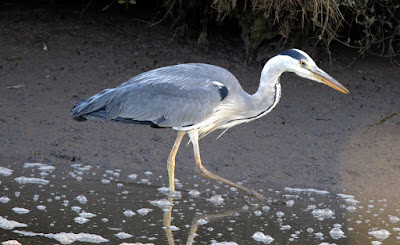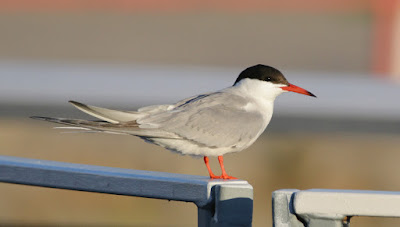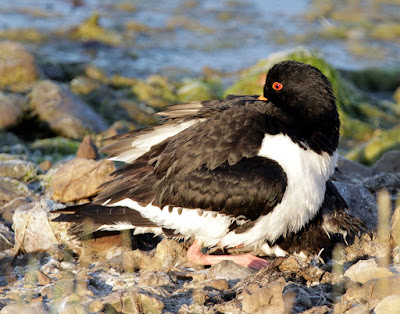The plan was to meet Andy at the Sand Martin colony at 0630.
I set off at 0600 as an HGV accident on the M6 near Garstang on Thursday resulted in closure of the motorway overnight, gridlock on the alternative A6 and local congestion on the A588. One accident and the whole of the North West ground to a halt. Luckily, no one was hurt and I heard that one side of the motorway was opened early morning.
Following our last visit to the colony on 3rd July 2018 I paid a few visits but looked from the road above so as to not directly trouble the nesting birds. The visits were mostly inconclusive but I suspected that after the first broods of June and early July many birds had already left as numbers seemed not to exceed one hundred birds.
Getting up close this morning showed the numbers present to be about 180 and possibly more as suggested by the catch of 72 Sand Martins.
Out of that overall total, 52 were new birds and 20 recaptures from this and previous years. The 72 comprised 29 juveniles and 43 adults; it was quite illuminating to find that on this our third visit, we are still catching new adults amongst the expected juveniles.
Sand Martin
Sand Martins are members of the swallow tribe, and one of the few British birds that nest in sometimes tight colonies; it’s a type of sociable living afforded to them by their preference for nesting in sandy or gravelly banks.
But Sand Martins are subject to the whims of nature when they return to a colony each year. The riverine bank or quarry face may erode or disappear completely during the birds’ six-month winter absence. In March and April the early returnees have first choice of existing holes that are in good shape when all they have to do is tidy up last year’s nest and add a few new feathers to protect the eggs from the cold sand and gravel of the tunnel.
New members of the colony may have to compete to find a suitable excavation, but if they can’t they have to set to and make a home. A Sand Martin has claws adapted for clinging, the beak short, rigid and pointed, the two a useful combination for excavation tasks. They grasp the perpendicular surface of their chosen spot with their claws and steady themselves by means of their tail and then make a small hole with their bills. They gradually enlarge the hole by moving round and round, edging off the sand with the side of their bills. Their progress is slow at first but after they have made room to stand on the excavation they intensify the work and push out the sand and gravel with their feet. Both sexes take their turn at the labour until the hole is three to four inches in diameter and up to three whole feet in depth.
Sand Martin
The building work is so expert and practised that the terminal nesting chamber of up to five or six inches is situated above the level of the entrance so that no rain water lodges where the eggs and chicks will be.
The picture below shows how the holes become worn, damaged and eroded throughout the season but if you look closely (click the pic), there are Sand Martins at hole entrances.
Sand Martin colony
Processing 72 birds for age, sex and biometrics kept us rather busy but we managed to see 2 Grey Heron, 6 Linnet, 2 Pied Wagtail and 2 Oystercatcher.
Pied Wagtail
Grey Heron
Take a look soon for more birding, ringing and photos in Another Bird Blog.
Linking today with Anni's Blog and Eileen's Saturday.

































































.jpg)












